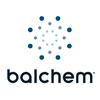Explore all the information on
Milk quality
Welcome to the page about Milk quality of Engormix; a source of knowledge on Milk quality.
Some call it the Holstein Hilton: a dairy farm in Manitoba where cows freely line up to be milked and fed by robots. It's one of the first voluntary milking systems in the province. "The funniest is when the old-timers come in here," said John Georgison, who runs the farm with his brother. "They can't believe it when they see the cows actually walk in and milk themselves." Cows at the farm line up by themselves and enter an automated stall one by...
Comments : 0
Recommendations: 0
Researchers have come up with a new, inexpensive tool for increasing milk production without resorting to growth hormones, according to a study published Monday. They have discovered that suppressing the serotonin in mammary glands can boost milk output by 15 percent. Changes in the levels of this hormone can affect mood -- but scientists think they've found a way to do it without giving cows the blues. "I don't know how you'd tell a depressed cow, but no ... (the drug)...
Comments : 1
Recommendations: 0
Agricultural Research Service (ARS) scientists are testing a plant-produced, therapeutic protein, which thwarts bacteria that cause inflammatory udder disease in dairy cows. They turned a laboratory-produced plant virus into a delivery vehicle that carries a specific gene. The target gene expresses large quantities of a protein called CD14. When the virus reproduces itself inside plant cells, it generates CD14. The researchers designed the virus to use the plant as a patent-pending...
Comments : 1
Recommendations: 0
Animals that have eaten genetically modified (GMO) feed show no residual traces in their eggs or meat, the EU's food safety agency said on Friday. In February, the European Commission received a petition from international environment group Greenpeace and signed by one million EU citizens demanding special labels for dairy and other products where the animals had eaten GMO feed. The Commission, the EU's executive arm, then asked the European Food Safety Authority (EFSA) for its...
Comments : 0
Recommendations: 0


Bioavailability of rumen-protected methionine: Mepron® contains the highest metabolizable methionine content among commercially available products
Suggested link
Milk processing capacity will be the main factor influencing the scale of Ireland’s dairy industry in the future. Together with efficiency and added value, processing capacity will have a major bearing on farm income and on the future expansion plans of the industry. This emerged at a major Teagasc dairy open day in Moorepark , Fermoy, County Cork, Thursday, 21 June. Speaking at Moorepark 07 Professor Liam Donnelly, Teagasc head of Food...
Comments : 0
Recommendations: 0
Cows could be bred to produce only skimmed milk within the next five years, researchers have said, offering a new way of meeting consumer demand for lower fat dairy.
Scientists in New Zealand say some of the country's four million cows contain genes that could be used to make them produce only skimmed milk.
Their work, published in Chemistry & Industry magazine, could help the dairy industry meet consumer demand for lower fat products while also reducing wastage.
A first commercial...
Comments : 0
Recommendations: 0


Effects of supplementation with ruminally-protected choline on performance of cows
Suggested link
Selenium (Se) is an essential trace element and has been documented to be important for the health of both animals and humans (Rayman, 2000; McKenzie et al., 1998). However, selenium intake is generally low in many areas of the world, particularly the Nordic countries, where content of selenium in soil is low. Thus, feed for livestock is supplemented with selenium, mostly as inorganic sodium selenite, although bioavailability of inorganic selenium is lower than that of organic forms (Ortman...
Comments : 1
Recommendations: 0
Introduction The essential trace element selenium (Se) is fundamental to mammalian health, influencing growth, immunity, muscle and neuromuscular function and fertility. Westernised cultures, including some European nations, have identified suboptimal intakes of Se according to recent accumulated survey data, a result that may be exacerbated by some modern agricultural practices (Rayman, 2000). A similar situation applies in Australia and New Zealand where Se-deficit status...
Comments : 0
Recommendations: 0
Abstract Restricted suckling during lactation is a widespread practice in cattle managed in dual purpose systems, appreciably reducing saleable milk and its fat content. Early weaning might solve these problems, but it could reduce milk yield after weaning. An experiment was carried out to evaluate the influence of early weaning on milk yield and fat content of crossbred Brahman x Holstein cows with restricted suckling. Twenty four animals were used, machine milked twice daily and...
Comments : 0
Recommendations: 0
An FDA risk assessment that is expected to declare meat and milk derived from cloned animals safe for the food supply is currently being reviewed by the government, and is due to be released by the end of the year.
If these documents are finalized, cloned animal products will become part of the food supply, without the requirement for such foods to carry special labeling. And this could result in a backlash of absence claims, with ‘clone-free' products starting to appear on supermarket...
Comments : 0
Recommendations: 0


Bioavailability of rumen-protected methionine: Mepron® contains the highest metabolizable methionine content among commercially available products
Suggested link
Abstract Restricted suckling is a characteristic of dual purpose cattle systems found in tropical America and has a series of advantages over artificial rearing, such as higher milk yield and calf live weight gain, together with lower incidence of mastitis. However, an important limitation of this practice is the complicated management during milking. It implies appropriate installations for machine milking, high labour requirements, difficulties in handling large calves and...
Comments : 0
Recommendations: 0



